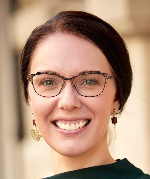- Track your orders
- Save your details for express checkout
×
Registrant Details
Use this window to add all the registrants you wish to register on behalf of. If you want to attend the course also, ensure you add yourself as one of the registrants. Make sure you press "Save" after adding each new registrant.
Registrant 1
First name
Last Name
Email Address
Username ( if known )
NZLS Member or Associate Member?
1x Registrant
Trusts and Blended Families Forum 2025 - On Demand
Published: 19-03-2025
CPD hours: 3.50
Excl GST
Non Member: $526.00
Law Society Member: $370.00
Package includes:
On Demand Module | Electronic booklet | PowerPoint Presentation
Note: Access to the online files is via your "My CPD" page. If you would like to purchase multiple packages, please contact us here.
On Demand Module
Presentation time: 210 minutesThis module will have a practical focus on how trusts are used in the blended family context.
The first part will consider drafting new trust deeds for blended families, and what to include to ensure the trust will meet the needs of the family over the long term. It will consider who holds which powers, how powers pass on death or incapacity, and how to ensure a balanced structure that can provide for different needs and interests. It will also consider key risk factors for disputes arising in this context.
The second part will consider existing trusts in the blended family context. It will look at how provision can be made for a new spouse, partner, or family while preserving and protecting existing assets held in trust. It will consider the role of contracting out agreements and trusts, making provisions in the event of death, and focus on key mistakes made in this area that put assets at risk.
The module will close with a panel discussion and questions from the in-person and live web stream audience.
Learning objectives
By completing this module you will:
- Have a better understanding of how to draft trust deeds that are effective for blended families.
- Gain an awareness of the options available to protect existing trust structures and assets in the context of a new relationship.
- Understand common pitfalls that arise in this area and be better prepared to avoid them (and the litigation that can follow).
Electronic paper
Authors: Sharee Cavanaugh, Greg Kelly, Kimberly Lawrence, Colette Mackenzie, Kevin Lenahan (Non-presenting)
Published: 19 March 2025
Pages: 22
Introduction
The first part of this paper will consider drafting new trust deeds for blended families. It will look at what should be included in new trust deeds to ensure that the trust will meet the needs of the family over the long term. It will consider:
- who holds powers of appointment and removal of trustees, and how they are held;
- who holds powers of appointment and removal of discretionary beneficiaries, when they can be exercised, and restrictions on their use;
- how these powers devolve on death or incapacity;
- independent trustee requirements;
- priorities of beneficiaries;
- memoranda of wishes; and
- how to ensure a balanced structure that can provide for different needs and interests.
It will also consider key risk scenarios for disputes in blended families, arising from drafting which was not adequately forward focused.
The second part of this paper will consider existing trusts in the blended family context. It will first look at how provision can be made for:
- a new spouse or partner;
- children of a second relationship; and/or
- a second family;
while protecting existing assets held in trust. It will consider the role of contracting out agreements and trusts, making provision in the event of death, and focus on key mistakes made in this area that put assets at risk in the event of separation.
It will also consider the use of existing trusts when making provision for a second family, and how to avoid allegations that powers were used improperly or to undermine the rights of existing beneficiaries.
PowerPoint Presentation
These are the slides included in the presentation.
 |
 |
| Sharee Cavanaugh Greg Kelly Trust Law Wellington |
Greg Kelly Greg Kelly Trust Law Wellington |
 |
 |
| Kimberly Lawrence Greg Kelly Trust Law Wellington |
Colette Mackenzie Greg Kelly Trust Law Wellington |
Questions?
You might also be interested in ...
Trusts Act - effectively advising your clients 2024 - On Demand
Publication Date: 14-11-2024Authors: Fiona King, Pravir Tesiram
CPD Hours: 2.00
